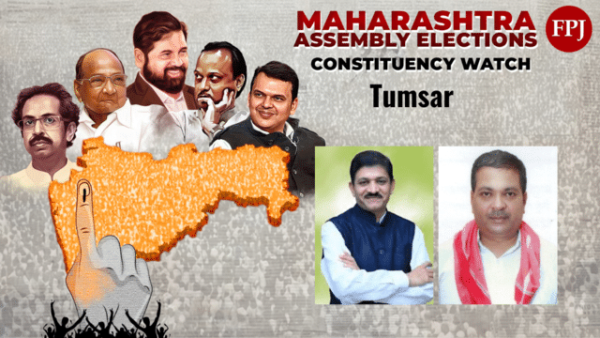
As Maharashtra gears up for the upcoming Assembly elections, the Tumsar constituency in the Bhandara district is set to witness a unique and fierce political battle as unlike in the past this time the focus is firmly on individual candidates rather than party symbols and traditional caste alignments.
Changing political landscape
Tumsar Assembly constituency is currently held by NCP MLA Raju Karemore. This seat has oscillated between parties over the years, with the Congress winning in 2009 and the BJP maintaining a stronghold from 1995 to 2004 under the leadership of Madhukar Kukde.
However, the 2019 election marked a shift as Karemore of the Nationalist Congress Party (NCP) edged out independent candidate Charan Waghmare, a BJP rebel, by a narrow margin of 7,700 votes. BJP’s Pradeep Padole trailed significantly in third place, signifying a swing in voter loyalty that still reverberates today.
In a departure from the traditional party-driven battle, Tumsar is now witnessing an intense face-off between Raju Karemore of the Ajit Pawar faction of NCP and Charan Waghmare from Sharad Pawar's camp.
Adding to the dynamic is Dhanendra Turkar, a Powar community candidate aligned with Sharad Pawar’s NCP. Notably, the Powar community, which hasn't seen representation since MP Shishupal Patle in 2009, is making its presence felt in this election. Other independents, including Thakchand Mungusmare and Sevak Waghaye, are also in the fray, bringing a diverse set of choices to Tumsar’s electorate.
Voter composition and key issues
The Tumsar Assembly constituency comprises a mix of Kunbi, Teli, Powar, and Dalit communities, with Kunbi and Teli voters traditionally dominating. Despite this demographic tilt, candidates require broader support across communities to secure a win. As a result, caste equations, development issues, and the personalities of individual candidates are pivotal factors influencing voter preferences this year.
Development concerns include industry stagnation, irrigation challenges, and socio-economic inequalities. Tumsar, with its rich resources such as Wainganga and Bavanthadi rivers and famous magnesium mines, is an agricultural hub known for rice and other crops, yet local farmers struggle with economic hardships. Infrastructure issues like the Tumsar-Ramtek national highway project and the utilisation of natural resources are on the voters' minds, as they seek leaders who can channel this prosperity into tangible development.
Battle of allegiances
The electoral strategies of the two major NCP factions—led by Ajit Pawar and Sharad Pawar—are crucial in this race. Waghmare, backed by local office-bearers and members of the Vikas Foundation, has garnered support from Congress loyalists in Mohadi and Tumsar, strengthening his base. On the other side, Karemore, known for his grassroots popularity, benefits from a second nomination by the Ajit Pawar-led NCP faction and could attract BJP’s traditional votes as well.
However, Karemore’s tenure has not been without controversy. While he is seen as a strong local figure, his reputation has been marred by criticisms related to alleged verbal misconduct towards women and officials, as well as dissatisfaction over local development.
As election day nears, Tumsar remains set for an unpredictable and closely monitored contest, with Karemore and Waghmare leading the charge in a battle that could redefine this historic constituency’s future.